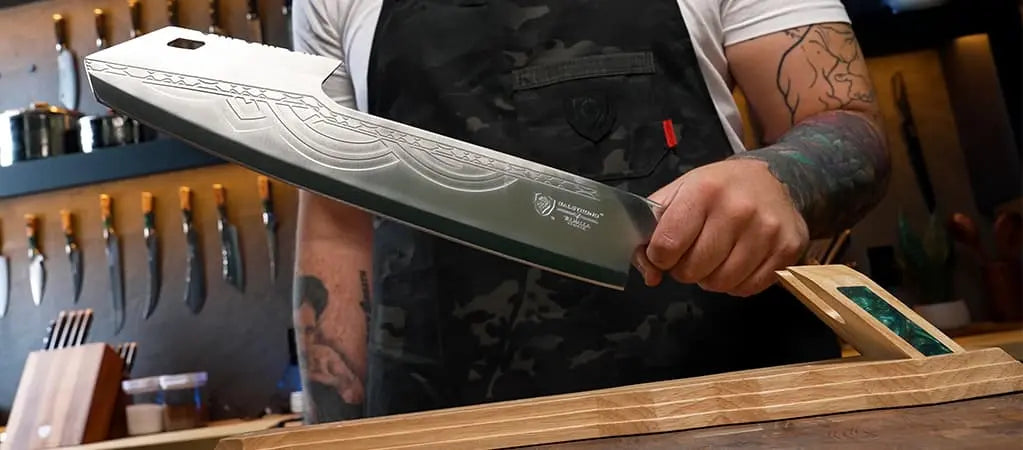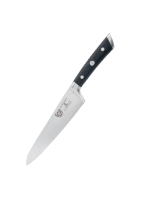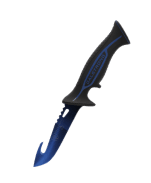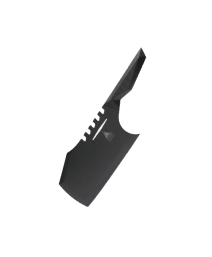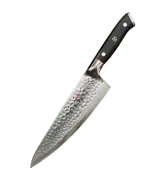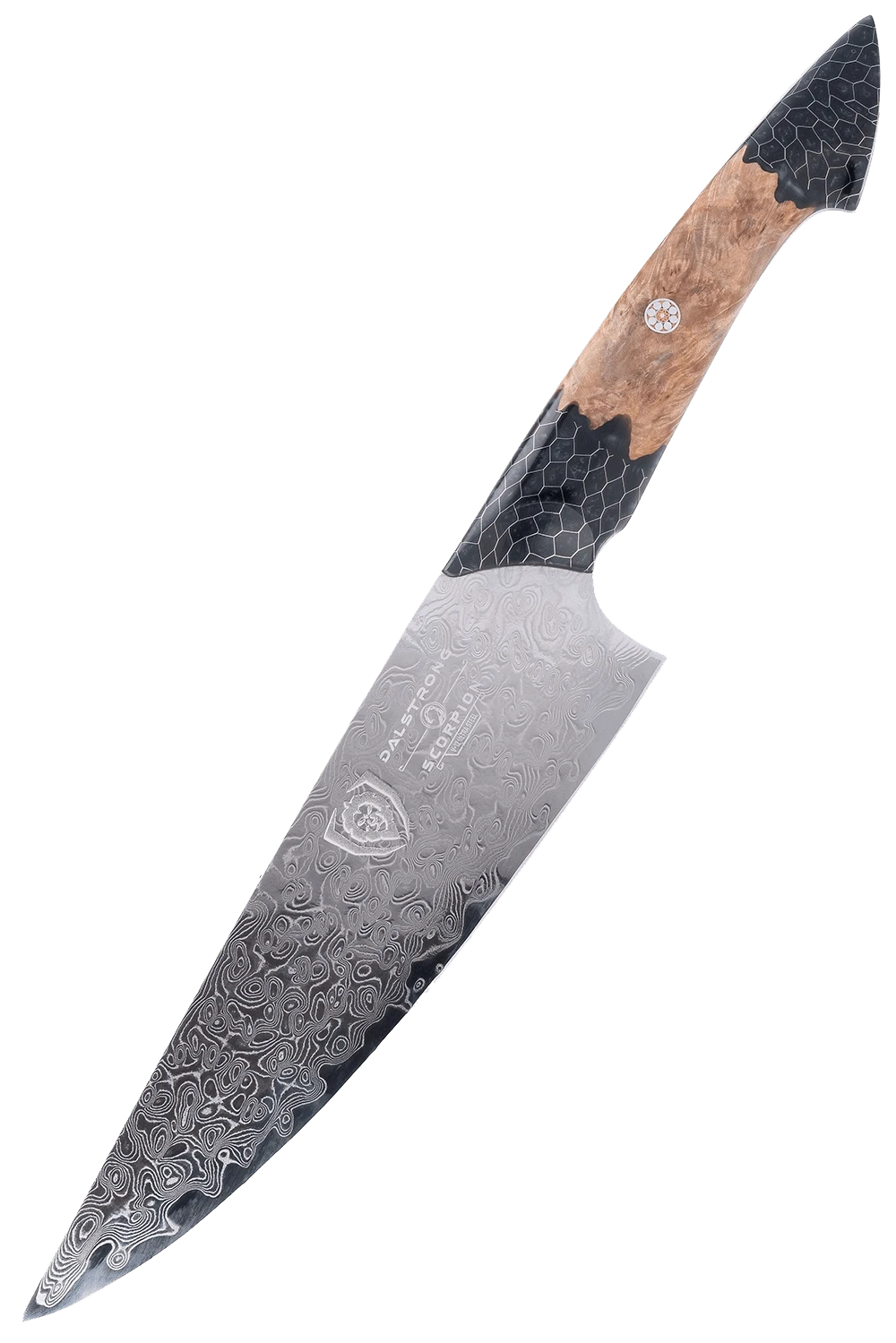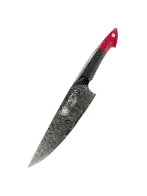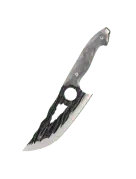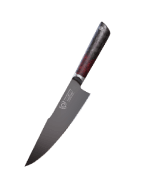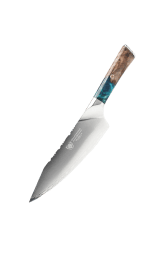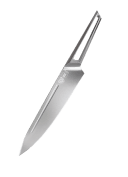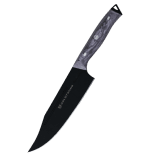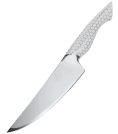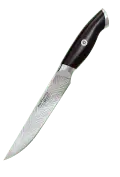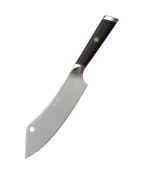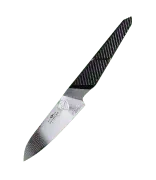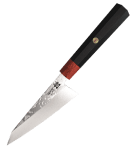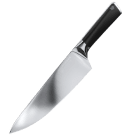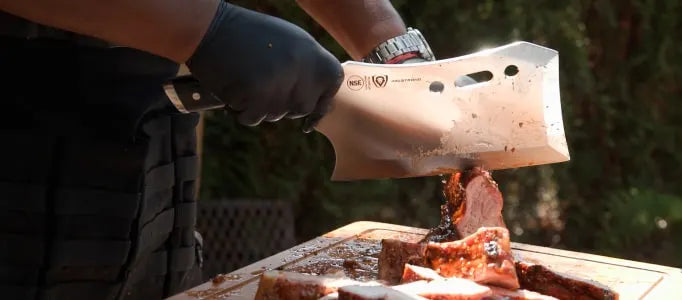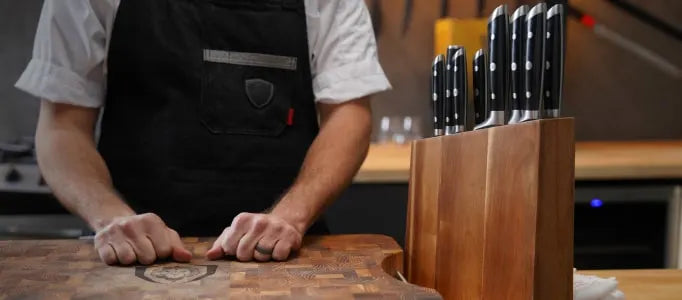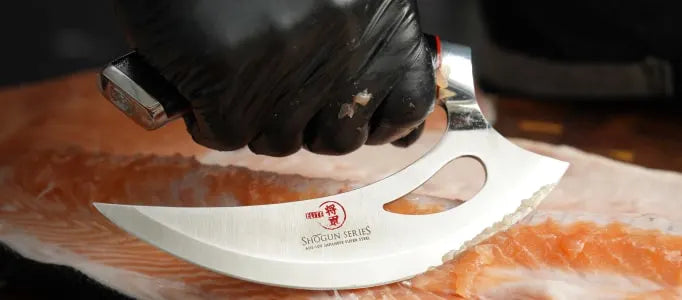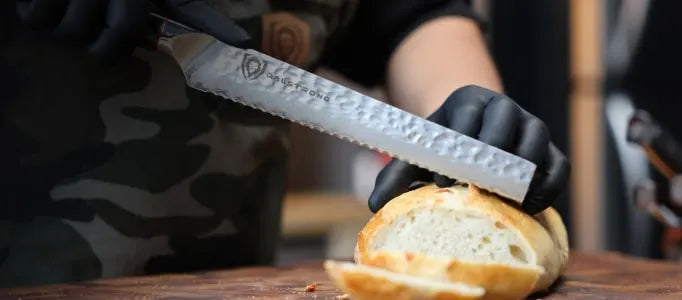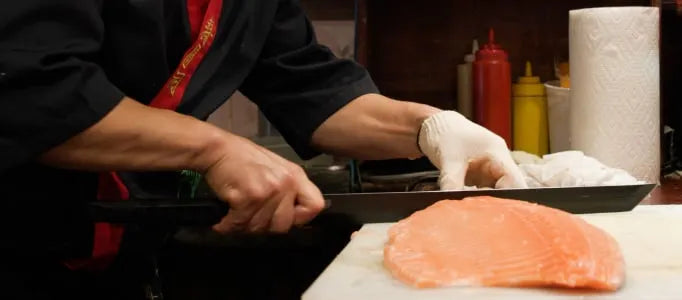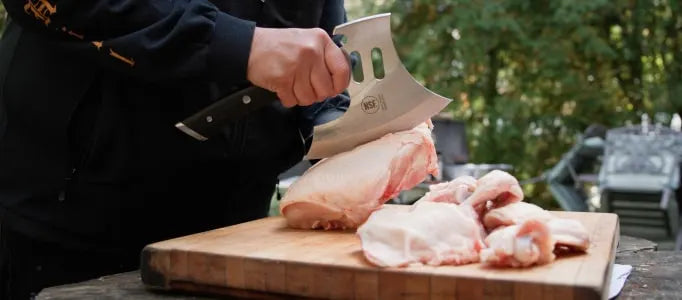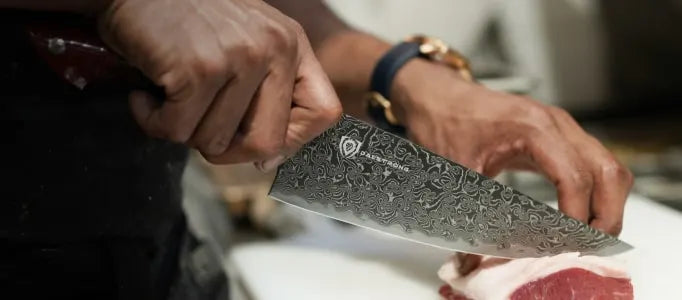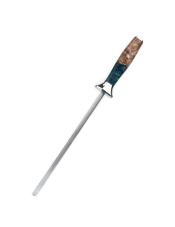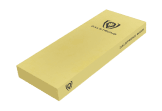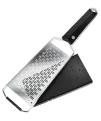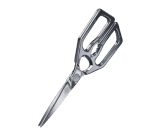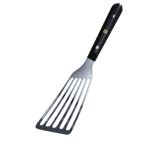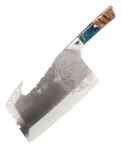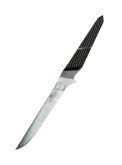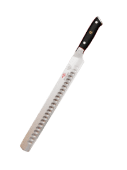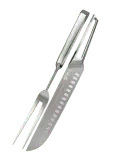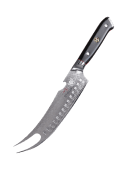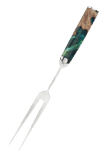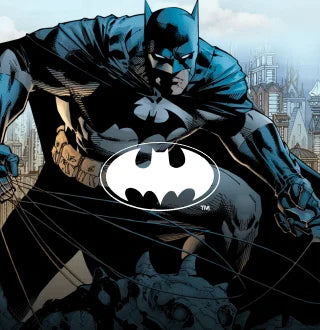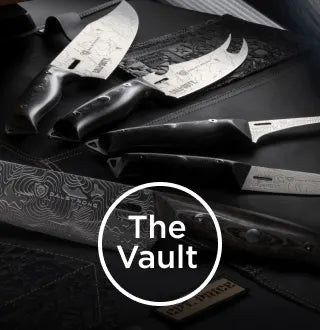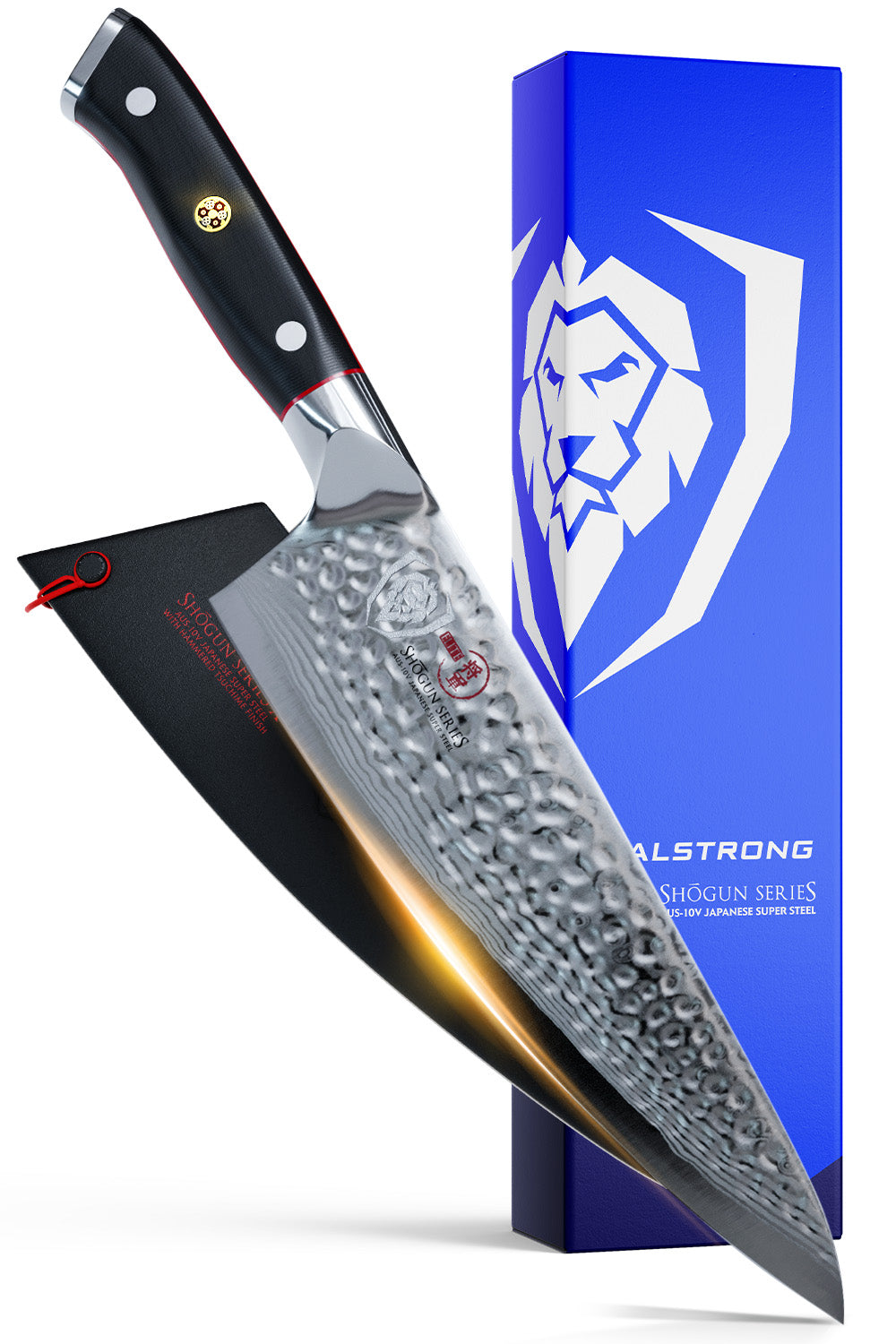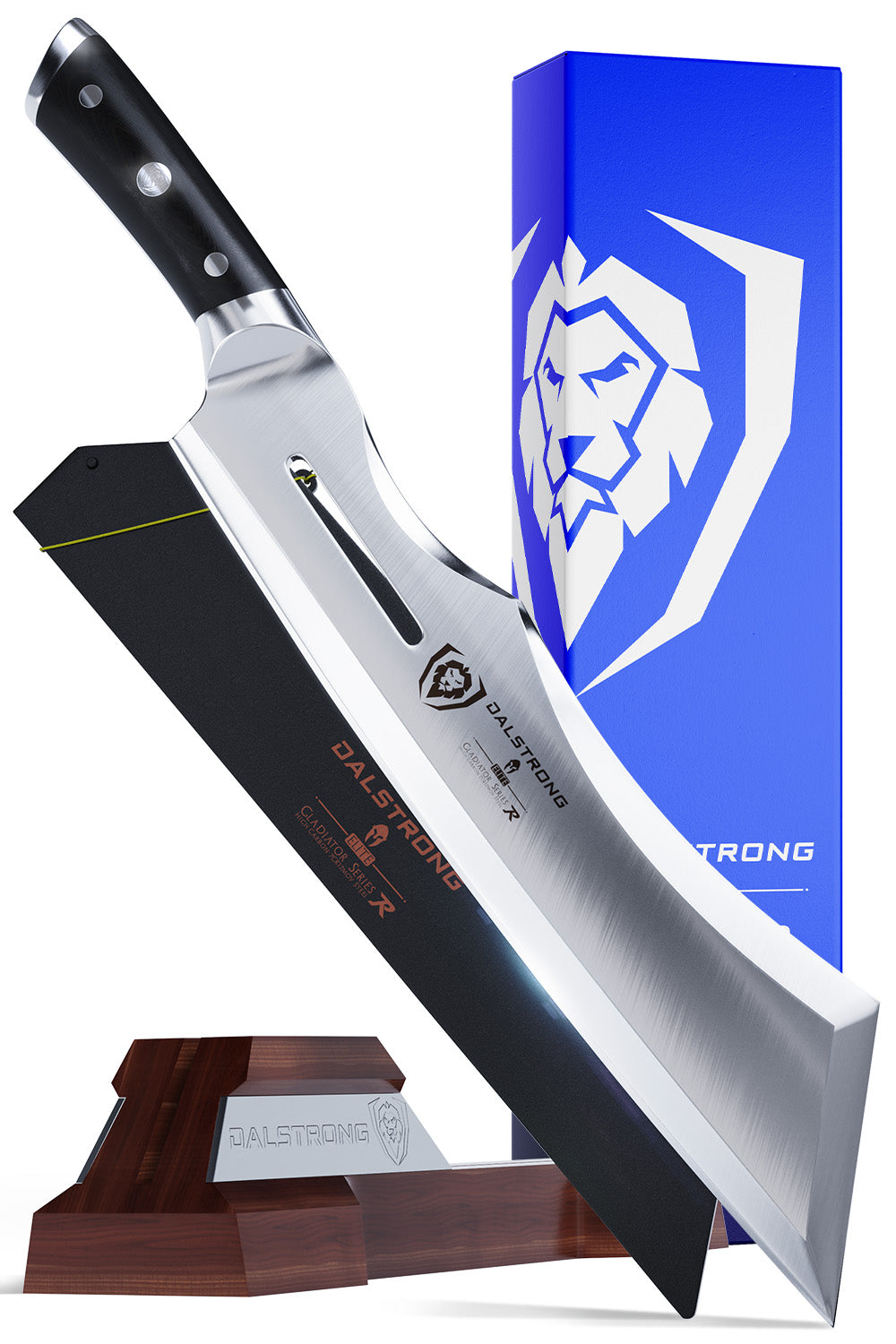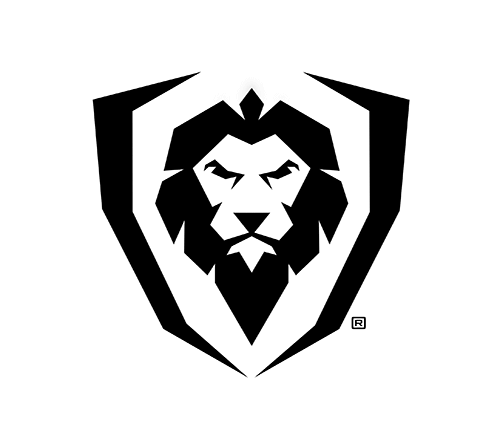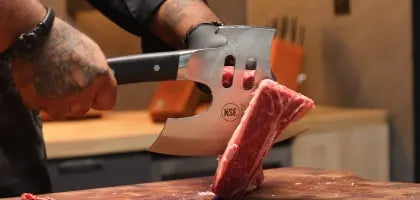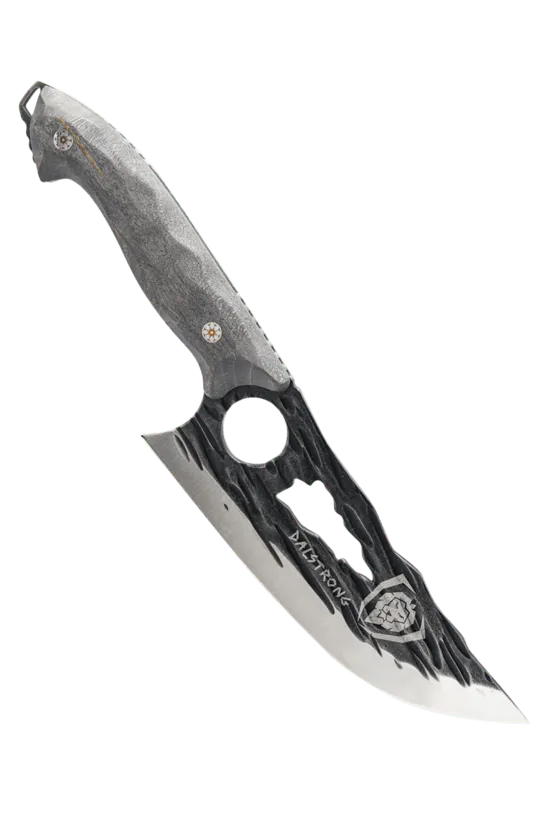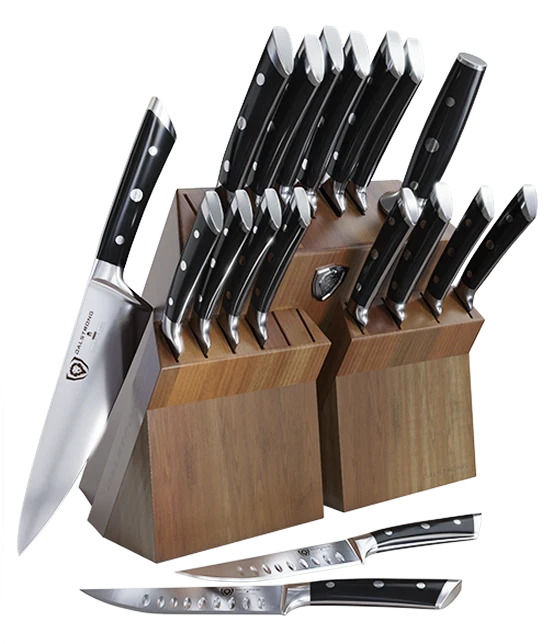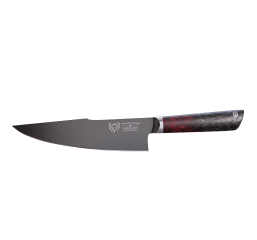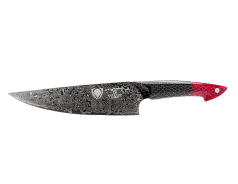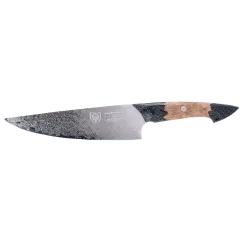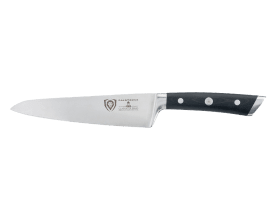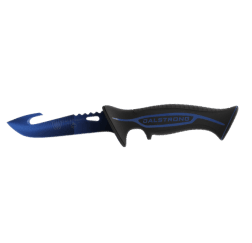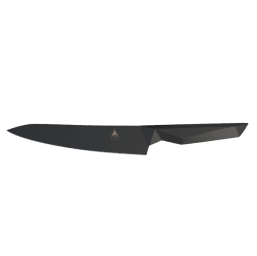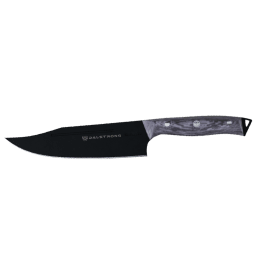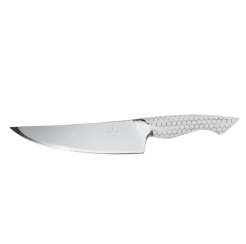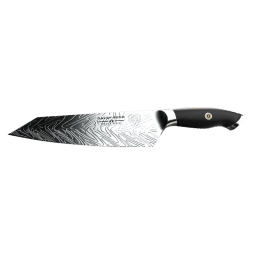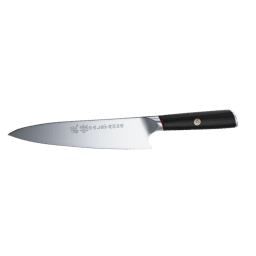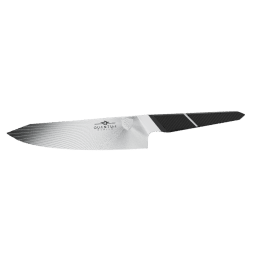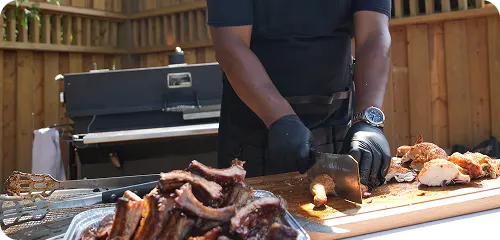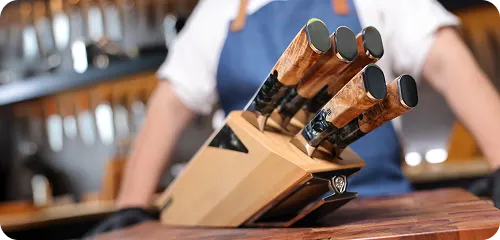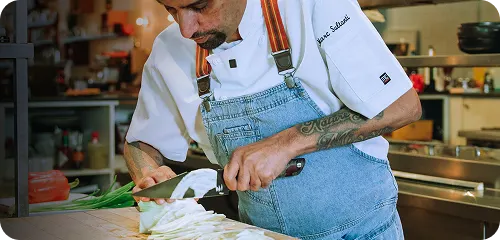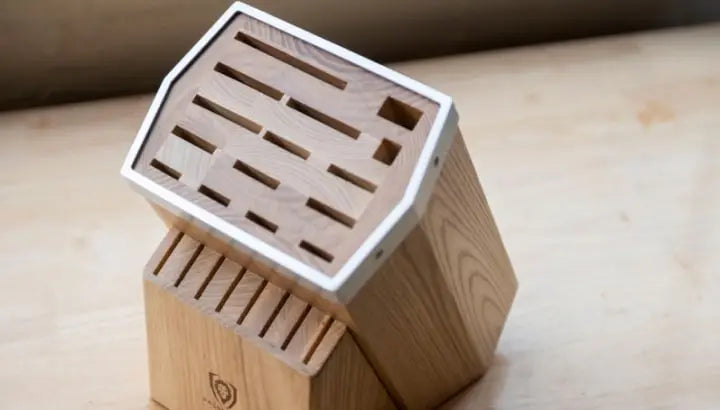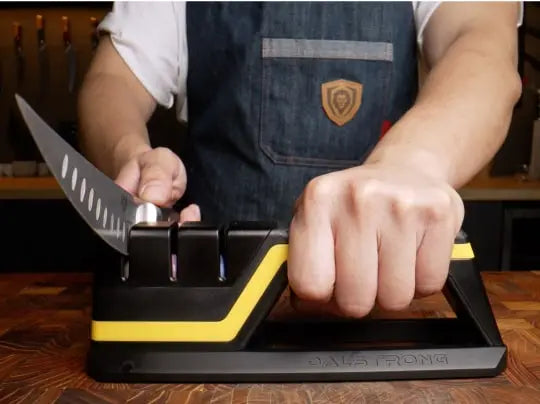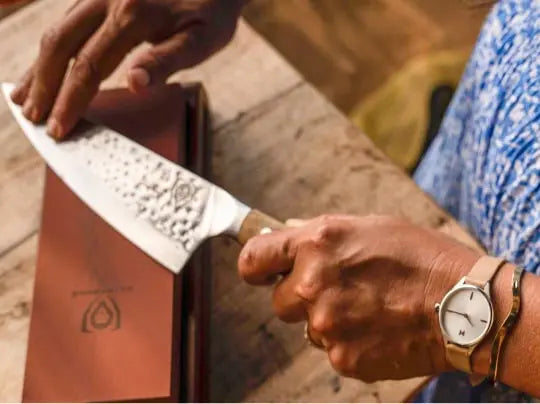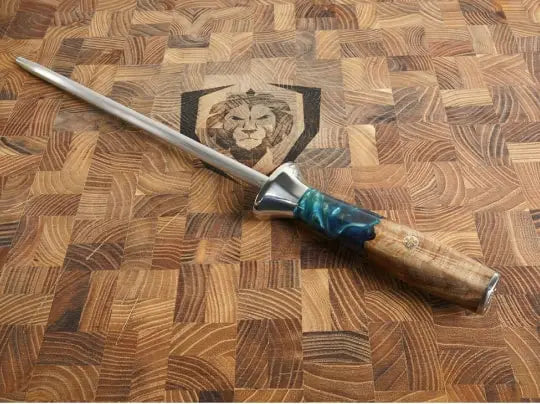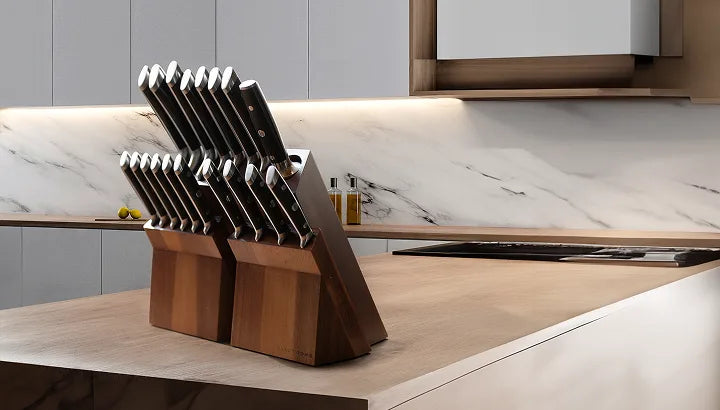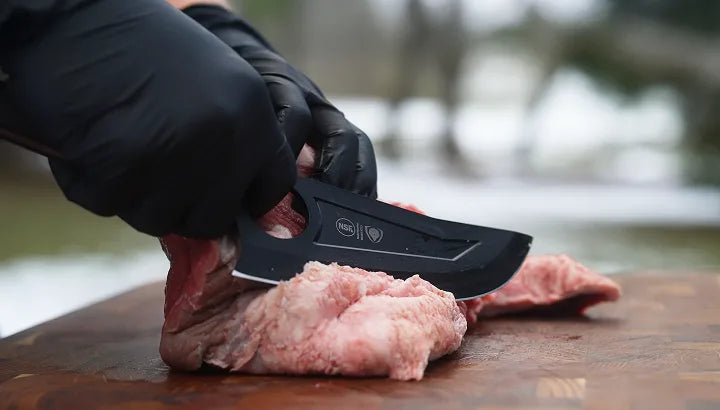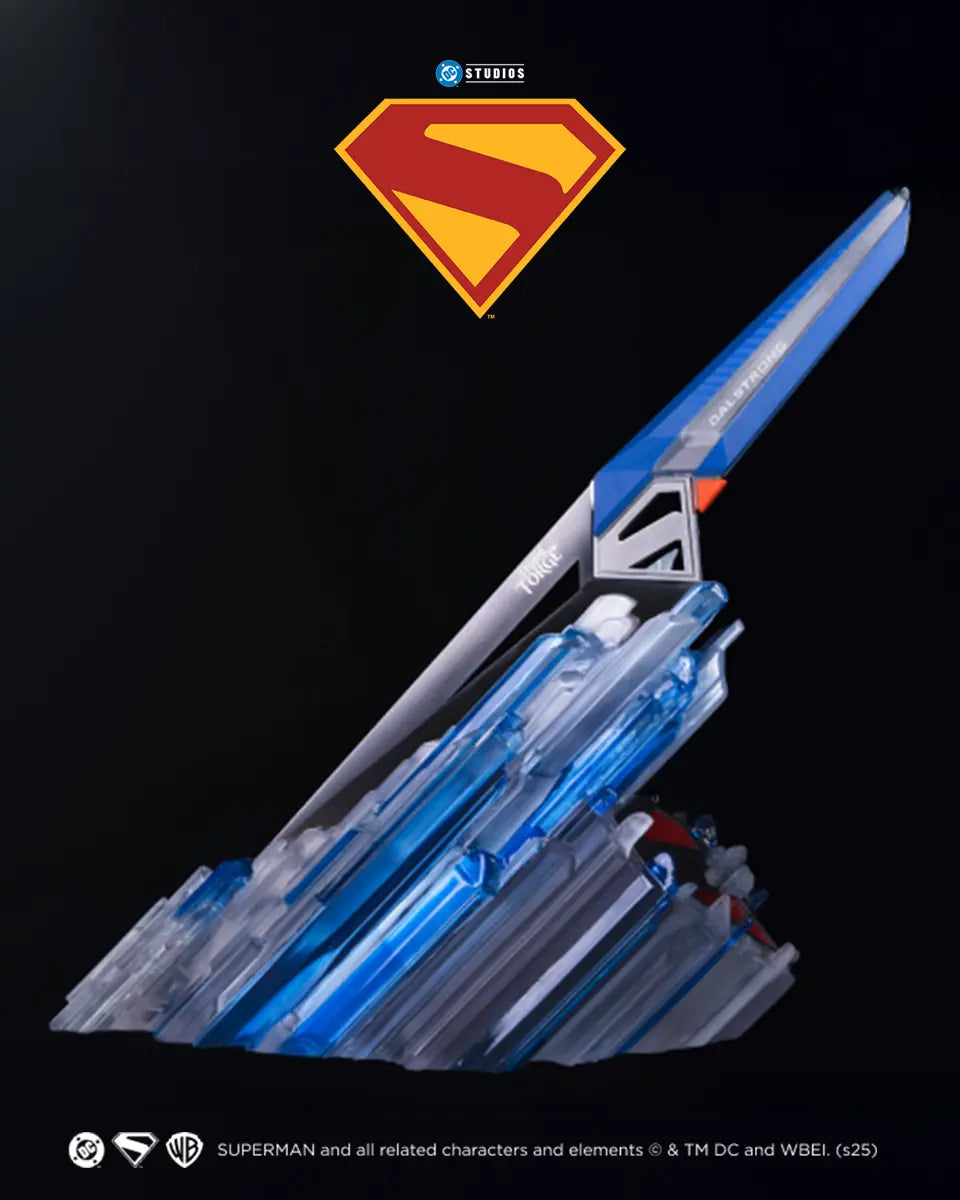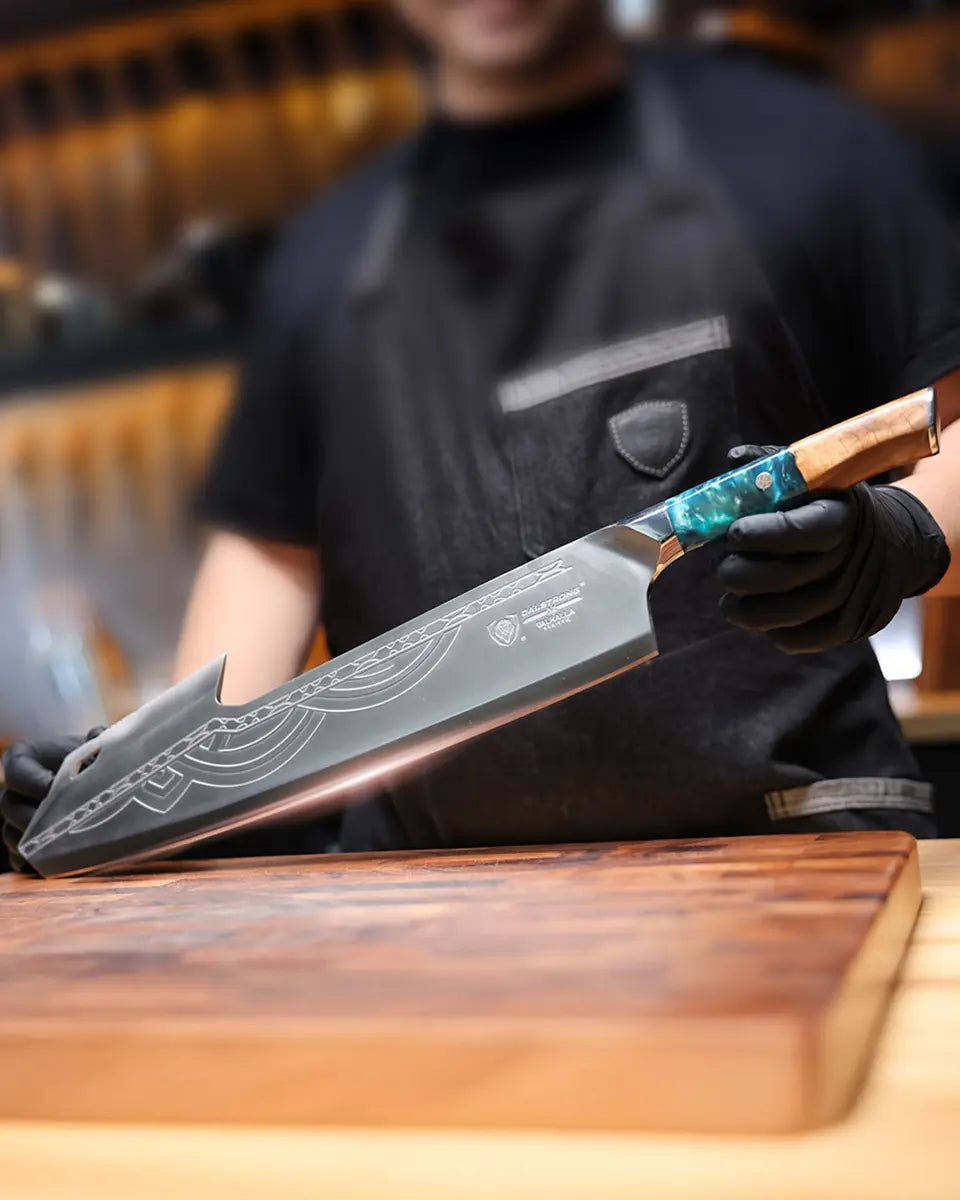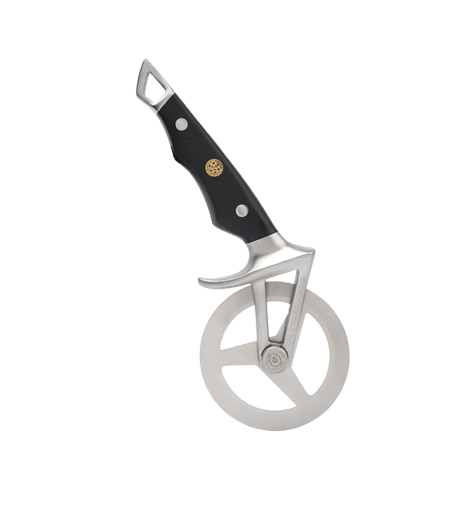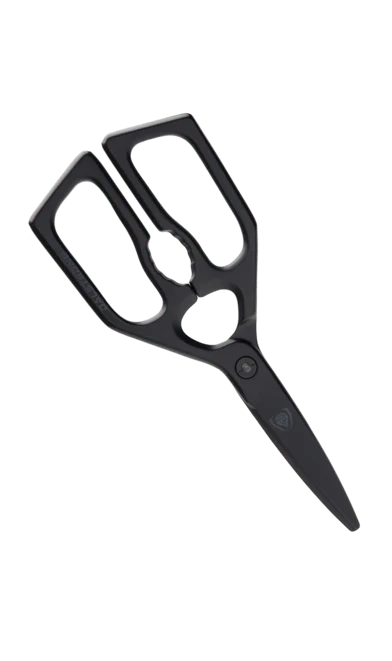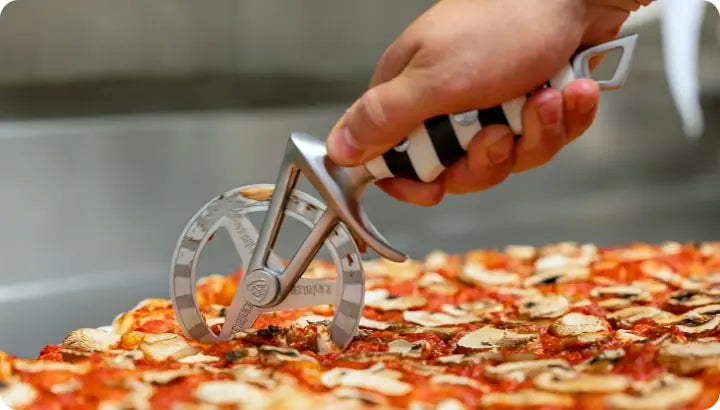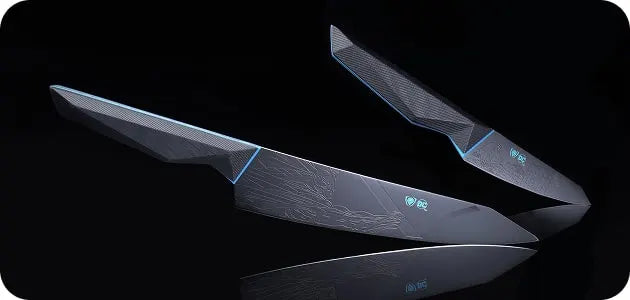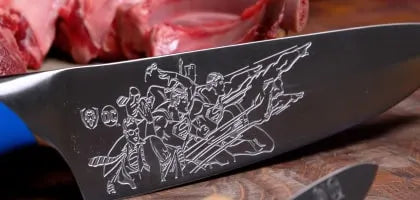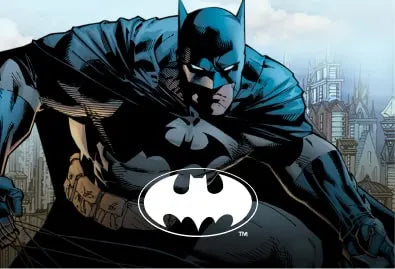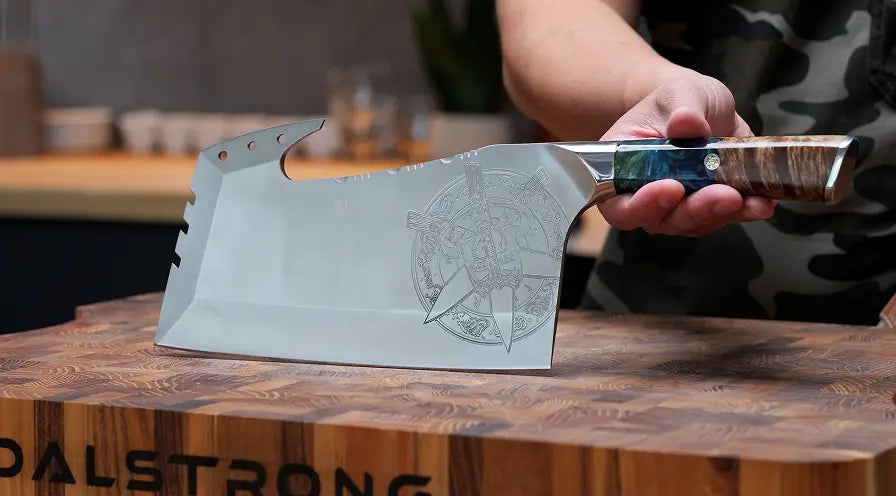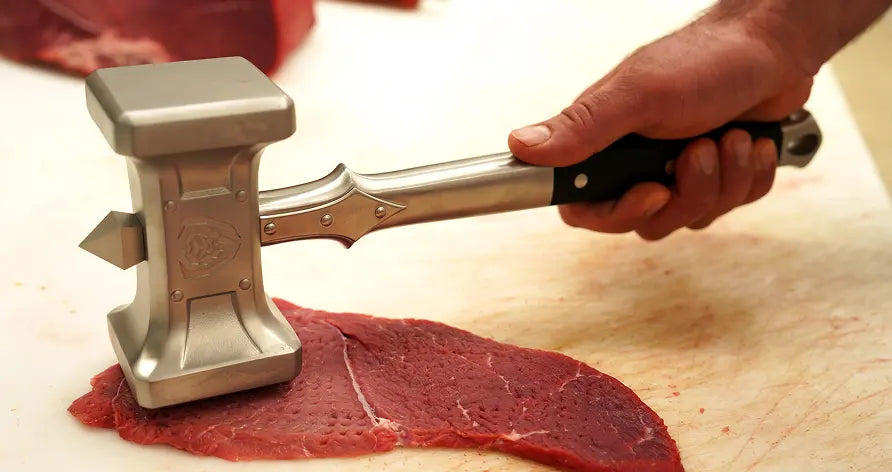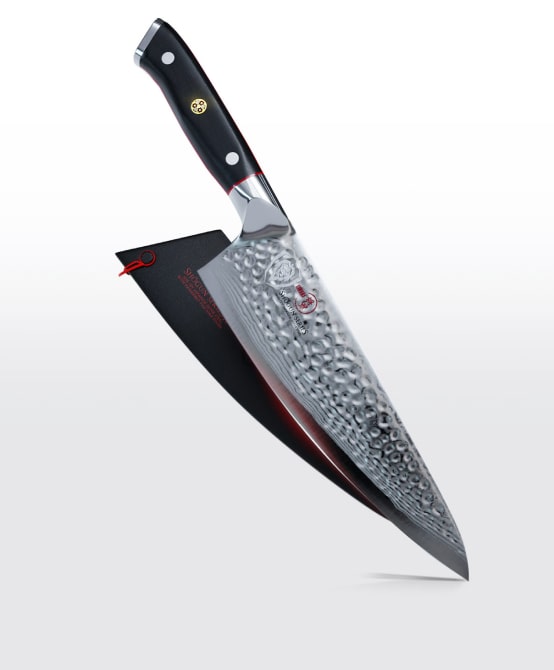 Chef's Knife 7" | Shogun Series
Chef's Knife 7" | Shogun Series
What Are Damascus Steel Knives, and Why Do We Love Them So Much?
Damascus steel has a long history, and its unique look holds a strong allure for consumers. But what exactly is it, and is it any better than other types of steel
1. Knowing Your Materials
For the longest time, right up until I had a kind of culinary awakening during adulthood, I couldn’t tell you what any of my knives or kitchen implements were made of. The best I could muster after a few seconds of intense pondering would likely be a confused “some kind of… steel?”
I’d wager that’s the case for a lot of folks. Many people either view cooking as a bit of a chore or something enjoyable but they don’t think about it too much. That kind of thinking extends past the actual act to the tools used to make it happen. After all, if you’re only a casual fan of piano jazz music, the chances are that it’ll inspire you to learn about the different types of wood that are used to manufacture the pianos.
But everyone eats, and not everyone is a piano jazz enthusiast. Knowing what knives are made from, the specifics of each type of steel, and how they interact with their environment, is extremely useful for home chefs. Why? Because not only will it equip you with the knowledge you need to properly care after your knives (not every type of steel behaves the same way!) it’ll also help you home in on the type of knives you want to buy in the first place.
Not only that, but it will help you identify the gaps in your knife collection.
Today we’ll be talking about a type of steel that gets a lot of attention for several reasons. For one, it results in some of the most beautiful-looking knives you’ll ever see. It’s so striking to look at that, with time, it’s become almost synonymous with culinary luxury. The fact that it’s also used to create some extremely powerful kitchen tools doesn’t hurt, either.
That’s right, we’re going to delve into the world of Damascus steel knives, and hopefully, we get to clear up a few common misconceptions about them. What is Damascus steel? Where does it come from? What’s it supposed to look like? Is it as good as people say? Hold on. There’s a lot to cover. Let’s take it from the top.
2. What Is Damascus Steel?
 Meat Cleaver 9" | Raptor | Shogun Series
Meat Cleaver 9" | Raptor | Shogun Series
Believe it or not, “what is Damascus steel” is a surprisingly contentious question, and a complicated one to answer. It almost depends on who you ask, and whether they’re trying to sell you something or not.
History of Damascus Steel
So let’s take it straight from the source. As the name implies, Damascus steel comes from the city of Damascus, where over a thousand years ago the local blacksmiths were considered to be some of the finest in the world. This was due to their unique techniques of steel fabrication, their methods creating some of the most gorgeous swords in the entire world.
There’s that word you’re going to find a few times throughout this article: “gorgeous.” The truth is, a lot of the hoopla over Damascus steel blades comes down to how they look. And the origins of this lie with these blacksmiths: The way they made these swords utilized a complex process that involved heating and folding the steel unto itself many times, creating a stronger and more ductile blade.
Impressive Style & Durability
Not only did you end up with an impressive blade performance, but you also ended up with an impressive blade look. The result of all this heating and folding onto itself was an intricate “swirl” unique pattern, reminiscent of waves crashing over a beach. So these blades were extremely appealing to look at as well as feature a spectacular performance, holding an edge for much longer than was standard at the time. They were also able to withstand usage that would result in other blades getting chipped and damaged quite easily.
But, is all of this actually true? As with many things in history, it’s hard to know. The original techniques have been washed away with the ages, devolving into legend and hearsay. But, as we know, legend often comes with a kernel of truth. Regardless of the absolute, objective veracity of these claims, what remains undeniable is that Damascus blades developed a reputation for their stunning look and impressive performance.
Advancements in Damascus Steel
Of course, humans have gotten much better at metallurgy with time. There have been advancements that resulted in steel types that were considerably stronger than what you might have found in Damascus over a thousand years ago. It’s hard to imagine that the blades of old Damascus could realistically stand up to the kind of blades we routinely produce today. So as far as performance is concerned, Damascus steel is something we’ve handily outdone by this point.
The appearance of Damascus steel still carries a tremendous amount of allure, and it’s something that we continue to be drawn to after all these years. If there’s something humans can become enamored with, it’s nifty-looking stuff.
Modern Day Blacksmiths Are Improving Damascus Steel
So how do modern-day blacksmiths achieve the Damascus steel look while still maximizing steel performance? Well, the answer is simple: they mix and match. Sometimes they use a process called pattern welding.
You see, most high-end Japanese knives these days are made by putting together layers of different types of steel. Usually, there is a thin layer of hard, brittle steel in the core – this is your cutting core. Then this cutting core is laminated between two layers of softer steel, which not only acts as a shock absorber but also as the outward-facing portion of the blade. This is what is known as the cladding. These days, you’re most likely to find modern Damascus steel as the cladding of Damascus steel knives, not as the core.
So these days Damascus steel knives are either forge-welded from different types of steel which can then be manipulated into a pattern, or they’re made from high-end stainless steel blades melted together in a crucible; the stainless Damascus result is still absolutely gorgeous to see, whether it’s on a small blade like a paring knife, a medium blade like a chef knife, or a long blade-like a slicing or carving knife.
3. Benefits of Damascus Steel Knives
So now that we know the truth behind Damascus steel knives – that these days you’re much more likely to find a knife that uses Damascus steel as the cladding over a different steel cutting core – let’s talk about the primary benefits of owning Damascus steel knives.
The first and most obvious one might make us seem vain, but it’s aesthetics. If there’s something every consumer of any kind of high-end home product knows, it's that driving urge to own stuff that looks cool, that says something about who you are and what you like, that externalizes your sense of identity into a tangible object. If kitchen knives aren’t a great example of that, I don’t know what is.
If you can find a Damascus steel knife that is made from layers of high-carbon steel with an inner core of high-carbon specialty steel, you’ve struck gold. Not only will you get an absolutely beautiful blade but you’re also guaranteed a high-performing kitchen tool. Looks and performance work together in perfect harmony.
When we talk about high-quality materials, of course, that is usually accompanied by a larger price tag. If you’re looking for something that looks and feels and handles well, you need to be prepared to pay a little bit more. And whether that extra cost is justified or not is entirely a personal choice – I know many people who would argue passionately for either side of that particular argument.
But remember: “Damascus” does not automatically mean better. Not every Damascus knife is going to be right for you. If you use your knife extensively, you care about its looks, and you want something that handles great and stays sharp, then I say go for it.
4. Caring for Damascus Steel Kitchen Knives
Once you’ve chosen to get a Damascus steel knife, you’ll want to protect your investment by making sure you take proper care of it. This way, your Damascus knife will last for ages, and you’ll have a better chance of it turning into a family heirloom that you hand down for generations.
Cleaning your Damascus knife
Taking care of a Damascus steel blade is similar to taking care of a carbon steel blade. You need to make sure that moisture stays as far away from it as possible. When you clean it, rinse clean under running water and then wipe it dry with a clean cloth.
Make sure you never leave the blade resting in standing water. Also, avoid letting the blade rest on a damp washcloth or tea towel, or cloth of any kind. If you can avoid storing it in direct contact with leather, good. And don’t wash it in a dishwasher. Moisture is the enemy and the more you can keep it away from your Damascus steel knife, the better.
Sharpening your Damascus knife
Thankfully, sharpening a Damascus knife is as easy to do as sharpening a stainless steel or high carbon steel knife. There are a few different ways to do this. The classics are:
Whetstones. We’re big fans of using Whetstones to sharpen your kitchen knives, and though it may seem a little intimidating to a newbie, it’s pretty straightforward – check out our explainer on how to sharpen a knife with a whetstone. All you have to do is hold your knife by the handle and angle its blade towards the stone until you achieve the correct precision.
Manual sharpeners are a more affordable, less intimidating solution. These usually come with slots for the different types of sharpening, and it’s as easy as running your blade through each slot a few times before putting it away.
Honing rods are a pretty common tool in the kitchen, and there’s a widely held misconception that they are for sharpening. As their name implies, honing steel rods are for honing, which means to reposition and align the edge of the blade. You should have no problems using this with a Damascus steel knife.
Overall, the same tools and processes you know and love from sharpening other kitchen knives will be available to you when you’re using a Damascus kitchen knife.
5. Kitchen Knives That Use Damascus Steel
So now that you know a bit more about Damascus steel – where it comes from, what it’s supposed to look like, how it was made in the old days, how it’s made now, how to take care of it – let’s take a look at some of the best kitchen knives in the market that use Damascus steel.
For this, we are going to focus on Dalstrong’s Shogun series, a widely acclaimed knife series that features just about every type of kitchen knife you may ever need (and some you probably had no idea you needed), made of premium high-quality materials.
1. Chef's Knife 8" | Shogun Series ELITE
This is the chef’s knife to end all chef’s knives. This stunning piece of kitchen engineering beautifully mixes performance and looks. It was painstakingly handcrafted over 60 days using only the highest quality materials, and it's so versatile that you’ll be able to use it on just about any culinary challenge that appears before you.
PROS:
- Made of an AUS-10V Japanese super steel core, with 67-layered Damascus cladding, sharpened under the ancient 3-step Honbazuke method.
- The blade features the gorgeous Dalstrong Tsunami Rose blade pattern.
- Features a tapered bolster which provides it with a “zero-balance” grip.
- The handle material is military-grade G10 Garolite, which feels fantastic.
CONS:
- This tool is definitely toward the upper end of the price range most people are willing to consider for a chef’s knife, but you more than get what you pay for.
- If you’re used to cutting herbs using a rocking motion, you may take a minute to get used to this particular knife, but once you’ve got a hang of it, you’ll be fine.
2. Boning Knife 6" | Shogun Series
If you find yourself working with cuts of beef, pork, and wild game, you need a boning knife. This 6” boning knife from Dalstrong’s Shogun series is a fantastic one, masterfully engineered for deboning, skinning, trimming, filleting, and butterflying cuts of meat, gliding effortlessly through sinew, fat, and muscle for optimal separation with minimal waste.
PROS:
- Precision-forged from a single piece of ultra-premium Japanese high-carbon AUS-10V steel, with 66 alternating layers of SUS410 Damascus steel cladding.
- The ergonomic handle is made of G10 garolite, a military-grade, inert, non-porous fiberglass-like material.
- Hand-finished in the Honbazuke 3-step method.
- Extra high carbon layers in its core, allowing for great sharpness and edge retention.
CONS:
- This knife features a longer handle than usual for boning knives, which may throw you off at first but you’ll get used to it quickly.
- At 6”, this boning knife may be a little small for some home cooks. If you’re looking for something larger, check out this 8” boning knife.
3. Bull Nose Butcher Knife 10" | Shogun Series
Speaking of breaking down cuts of meat, this magnificent 10” bull nose butcher knife is exactly what you need if you’re wanting to easily slice through flesh, break through cartilage and trim fat from beef, poultry, pork, fish, or just about any other meat you can throw at it. Expertly designed to sail through meat without damaging it in any way.
PROS:
- An extremely sharp knife at an incredible 8-12 degree angle per side.
- Also has fantastic edge retention, with a Rockwell hardness score of 62+.
- Like the other knives in this collection, its core is AUS-10V super steel, with 67-layered sharpened Damascus cladding with rust and corrosion resistance.
- Full tang knife for maximum robustness.
CONS:
- 10” seems to be perfect for most butcher knives, but it may be a little long for some home cooks. Ask yourself if you need a knife this large.
- Alternatively, if you’re going to do a lot of deboning and would like something smaller, you could go with one of the boning knives recommended above.
4. Bird's Beak Peeling & Paring Knife 3" | Shogun Series
No kitchen arsenal is complete without a good paring knife; if you’re going to be performing some precise cuts, you absolutely need to have one. And this 3” bird’s beak paring knife from the Shogun series is a fantastic choice for precisely that reason, aiding you in any peeling or paring needs you might have with its short, curved blade.
PROS:
- Its shape makes it perfect for fluting mushrooms or creating decorative garnishes.
- Nitrogen cooled blade, aiding in flexibility and corrosion resistance.
- An incredible value for the price.
- The bolster provides great balance and finger protection.
CONS:
- This knife is pretty tiny, so keep that in mind. If you’re looking for a paring knife that’s a little larger, this set comes with a few great options.
- The handle on this 3” paring knife is long, but this will aid you in your usage of it, especially if you’re making small, precise cuts on produce.
5. Carving Knife & Fork Set 9" | Shogun Series
A slicing and carving knife is something every BBQ or home grilling enthusiast should have. This incredible set, which comes with a 9” carving knife and fork, is exactly what you need to ensure that every brisket or ham is perfectly and effortlessly sliced.
PROS:
- A 9” precision forged blade with a Japanese AUS-10V super steel cutting core, as well as 66 layers of high carbon Damascus steel cladding.
- An absolutely beautiful knife, sporting Dalstrong’s elegant Shogun Series Tsunami Rose blade pattern.
- A scalpel-like edge, hand-finished to a mirror polish using the 3-step Honbazuke method.
- Comes with an accompanying carving fork with an ergonomic design and matching handle.
CONS:
- If you need something a little larger, try this 10” breaking cimiter knife.
- What, you want something even larger? Here’s a 14” slicing and carving knife to make quick work of your largest pieces of meat.
6. Frequently Asked Questions About Damascus Steel Knives
Is Damascus steel good for knives?
Damascus steel is good thanks to its attractive look and sense of built-in tradition. When paired with other types of steel, it can result in an extremely powerful kitchen tool that also happens to look extremely luxurious.
What is special about Damascus knives?
Damascus knives are famous for their ability to maintain their sharpness, as well as for their attractive visual appearance.
Are Damascus knives the best?
Damascus knives are great! Of course “the best” is a subjective appreciation, but all we can say is a lot of people really love them.
Shop Dalstrong Shogun Series Knives Today
Written by Jorge Farah
Born on the coast of Colombia and based in Buenos Aires, Jorge is a cooking enthusiast and kitchenware obsessive with a tremendous amount of opinions.



